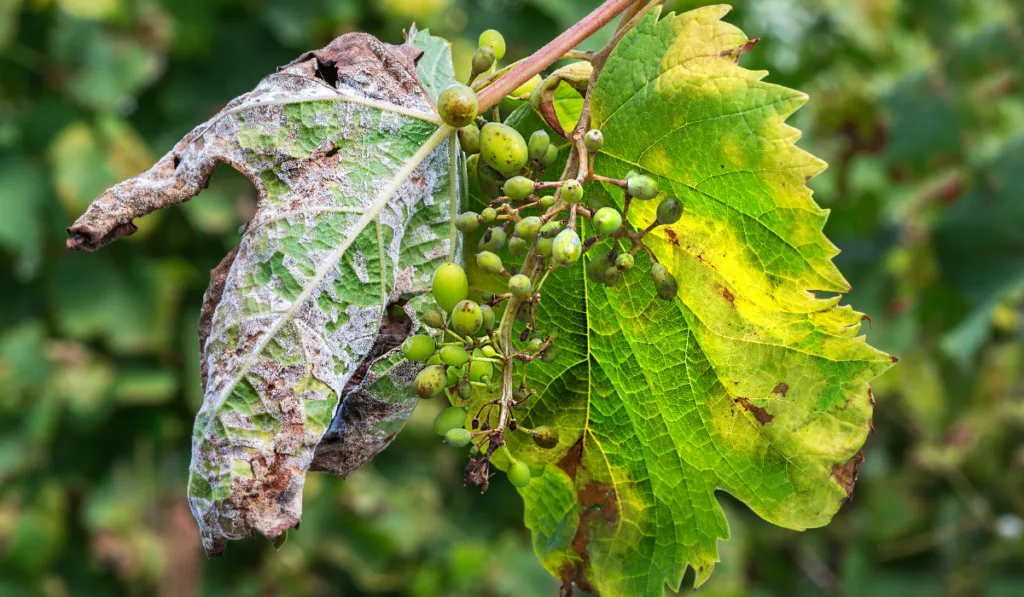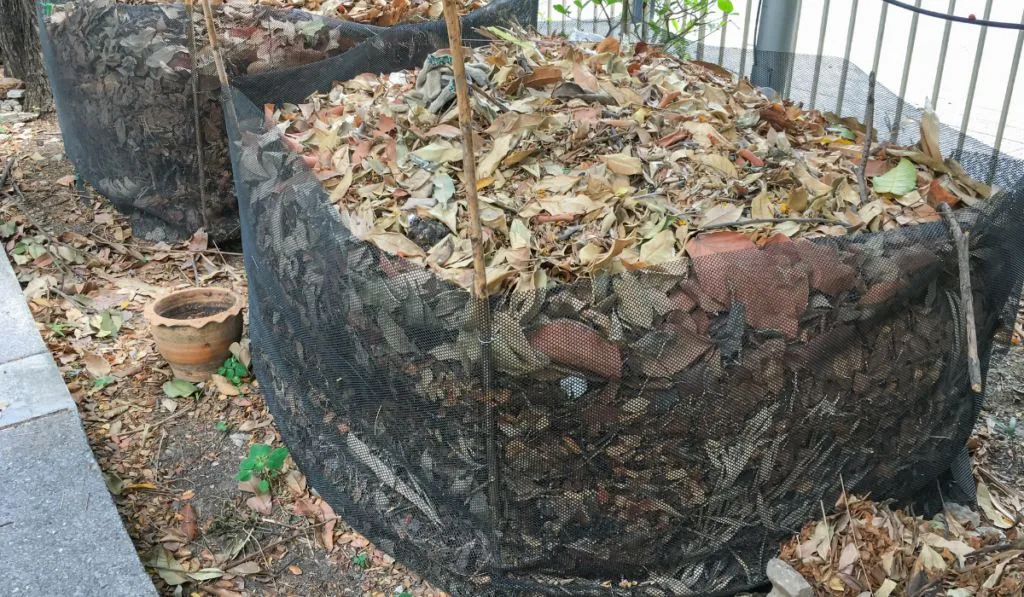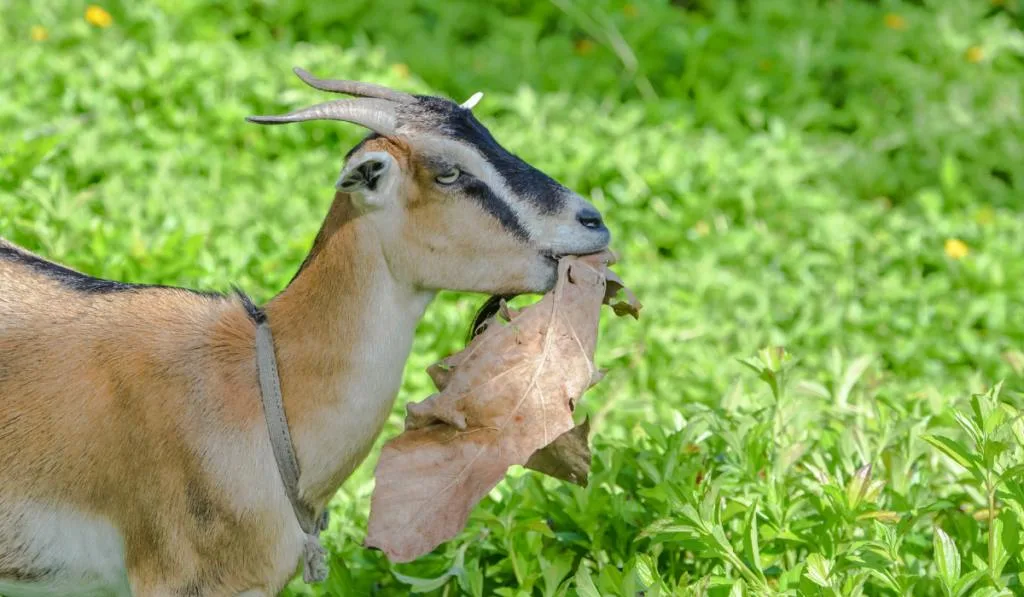Is your yard covered with leaves? You are lucky because to gardeners, dead leaves are gardening gold. What can you use dead leaves for? Can you add dead leaves to the soil? Dead leaves have so many uses in gardening. In this article, we will discuss the uses of dead leaves and how to make use of dead leaves for soil.

As a gardener, what can you use dead leaves for? Dead leaves have so many uses, but in this article, we will consider the three most common and essential uses:
- Mulching
- Composting
- Making leaf mold
You may know how to mulch with dead leaves, to make compost with leaves, or amend the soil with dead leaves, but do you know the science between those practices and precautions to take?
Do you know how to store dead leaves for late use? Are there other uses of dead leaves? Continue reading as you find out the answer to all your questions and more.
Table of Contents
Using Dead Leaves for Soil
Soil, after your fruits, vegetables, and flowers, is the most important factor in gardening. Unless you are planting in a soilless medium, your plants will not grow well is the conditions of the soil is not favorable.
To amend the soil, so many gardeners use various products. Here we will discuss how to amend soil or improve your gardening experience with dead leaves.
Mulching

Mulching is the practice of covering the surface of your garden soil with any material of your choice. Most gardeners use wood shavings, hay, grass cutting, etc. as mulch. You can use dried leaves as mulch.
Using dried leaves as mulch can prevent your soil from drying quickly and prevent weed from growing.
Mulching with dried leaves can buffer the temperature of your soil and extend your growing season. In summer, dried leaves can block some rays of the sun from reaching the soil, therefore, preventing the soil from getting too hot for your plants. In winter, using dried leaves as mulch can retain some soil heat as dried leaves act as soil blanket.
As you can see, dried leaves are beneficial to gardeners in mulching. How can you mulch with dried leaves? Use the tips below
Useful Tips on Mulching
Do you want to use dried leaves as mulch? The tips below are for you.
- Shred the leaves before you use them as mulch if you can.
- Cover soil with at least 2-3 inches of mulch for the best results
- Cover the corners of plants and between plant rows to prevent weed growth
You can shred dried leaves with a lawnmower, a leaf vacuum that can shred leaves, or raking them into a leaf shredder.
Composting

Composting is the process of breaking down organic materials into a fine material that amends the soil. Finished compost can be added to sand to boost the nutrient content and reduce the drainage capability of the soil.
Compost can be added to clay soil to increase its drainage capability. Compost can also be added to loam soil to increase the nutrients in the soil. Compost is eco-friendly and does not cause any harm to the environment.
How can you use dried leaves to make compost?
How to Make Compost and Other Useful Tips
Every expert gardener knows that to compost successfully, you need more dried brown materials than fresh green materials.
In composting, the recommended carbon (i.e. dried brown materials) to nitrogen (i.e. fresh green leaves) is 25:1. This means that for every 1 lb of fresh greens used, you need 25 lbs of dried browns. (Source)
Other useful tips in composting are:
- Remember to mix and turn the materials regularly
- The compost bin should be twice the size of the compost materials
- If your compost pile is smelly, you should reduce how much water you pour on it
- Earthworms, millipedes, etc. in your compost pile can make your pile decompose faster
- Your compost bin should allow so much oxygen to reach the pile so that is can decompose faster
Composting is not a difficult task. Later in this article, you will learn about the recommended materials to make a compost bin
Making Leaf Mold

Leaf mold is the unfinished product of leaves when they breakdown. Unlike composting that uses a combination of different materials, leaf mold is a leaf that looks rotted as at breaks down.
It takes fungi about a year or two to completely decompose leaves. Dried leaves decompose slowly because they lack so many nutrients.
Do dead leaves decompose into soil? Many people think that when leaves decompose, they become soil. The truth is that leaves decompose into humus. Humus, when mixed with soil, improves the soil structure and nutrients.
Use the tips below to make the best leaf mold
Useful Tips on Making Leaf Mold
First of all, you should understand that dried leaves become leaf mold, then leaf mold becomes humus. The tips below will teach you how to get humus quickly.
- If you abandon the leaves in a corner, they will decompose slowly, so you should turn and mix the leaves regularly
- Pouring water to the leaf pile can aid in the decomposition of the leaves as microbes need water
- Earthworms, millipedes, insects, etc. can be found in the leaf pile. They help to breakdown the leaves faster and excrete nutritious substances
Indeed, dead leaves have so many uses in gardening. Dead leaves are common in fall (autumn), so you can start composting by then.
What if you want to use your dead leaves as mulch by the next spring or you just want to keep your dried leaves for future composting? How can you store dried leaves? Continue reading.
How to Store Dried Leaves
How can you store dried leaves? The best way to store a pile of dried leaves is to leave them undisturbed in a corner or bin.
If you abandon the leaves in a corner, they will decompose slowly. Most leaves fall in autumn and the rate of decomposition is very low in winter. This means that if you abandon the leaves in a corner, they will still be available and ready to use in the coming spring.
You can reduce the rate of decomposition even more by keeping them moist-free. Make sure that you do not shred them.
What kind of bin is best for storing or composting leaves?
Leaf Compost Bins

What kind of material should your compost bin be made of? How should the compost bin look like? A suitable compost bin is two times the size of the materials that you want to compost.
A compost bin that is twice the size of your composting material has enough oxygen and temperature for the microorganisms that decompose your leaves. (source)
Whether you are composting the leaves or you just want to store them (storing the leaves only slows down the rate of decomposition), your compost bin should be made of metal, plastic, or treated wood.
Do not use wood that is treated with chemicals that are harmful to the environment (since they could possibly leach into the compost pile).
A cage that allows sufficient oxygen to reach your pile of leaves such as a wire mesh cage is appropriate for storing your pile of leaves.
Now that you know the major uses of dried leaves in gardening and also how to store dead leaves, let us discuss other uses of dead leaves.

Other Uses for Dead Leaves
Other uses for dead leaves include:
- Food for Ruminant Animals: Ruminant animals such as goats can digest cellulose which is the major constituent of dried leaves. You can use the manure of these animals to increase the fertility of your soil. Just be sure the leaves are not from a toxic plant.
- To Make Biogas: If you live in the tropics, subtropics, or a region in which you can make biogas (the microbes that make biogas are more active in hotter climates), you should consider using your dead leaves in the biogas digester. The slurry (byproduct in biogas) can be poured into your garden soil as it is very nutritious.
- Bury Them Into the Soil: You can bury dead leaves in the soil. Note that they dried leaves can decompose slowly if buried in the soil. To boost the rate of decomposition in the soil, introduce earthworms into your garden. Earthworms will eat your dead leaves along with other decaying matter and excrete nutrient-rich castings for your plants. Make sure that you bury the leaves for at least 1 month before planting.
As you can see, whether you are using dead leaves as mulch, compost, humus, food for ruminant animals, or to make biogas, you can always use dead leaves to boost the structure and fertility of your garden soil.
Final Thoughts
Dead leaves are gardening gold. Dead leaves have so many uses in gardening. When your yard is covered leaves, do not throw them away, instead, use them as mulch, for compost, or humus.
What do you think? Will you throw your leaves away after reading this article? Share your thoughts in the comment section below.
